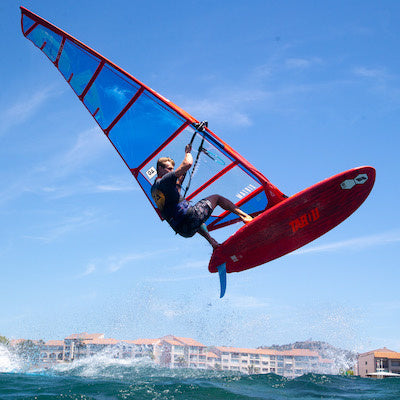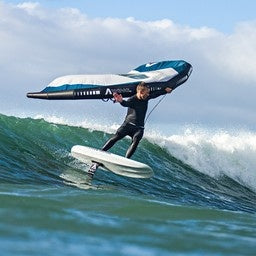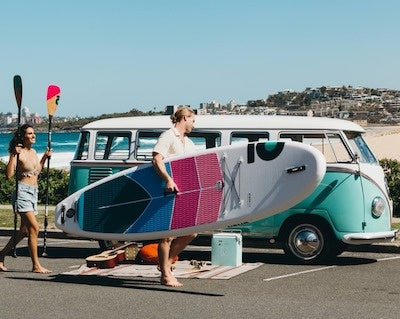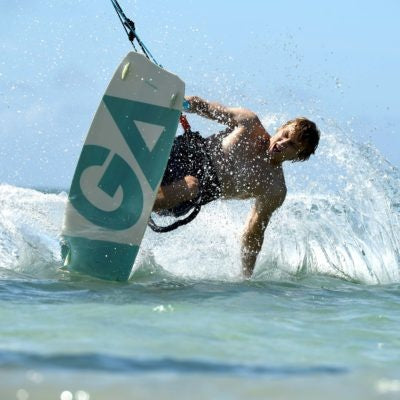What's Foiling?
How does a foil work?
Foils are designed to have optimum hydrodynamics enabling them to travel cleanly through the water with little resistance. This encourages laminar water flow over its asymmetric shape and creates higher pressure on the underside of the front foil and a reduced pressure on the top - just like an aeroplane wing!
This difference in pressure, results in an upwards force lifting the foil, and consequently the board/craft it is connected to.
As the board gains speed and water flows over the foil’s front wing it develops lift, causing it to rise towards the water’s surface, elevating the board and thereby reducing drag.
To alter the amount of lift produced, the rider can change the 'angle of attack' of the foil through adjustments of front and back-foot pressure therefore reducing or increasing lift to enable a stable flight.
The tail or ‘stabiliser’ foil helps balance the front foil by stabilising the fuselage in the horizontal plane, much like an aft rudder or a plane.
What are the different parts of a foil?
Wing foiling, windsurfing, SUP and surfing use a similar foil design to create lift, balance and control ride height through a single point of connection on the riders board.
There are several main parts:
• A mast.
• Fuselage.
• Front ‘main’ wing.
• Rear ‘stabiliser’ wing.
Mast: Manufactured in either carbon, composite, or aluminium. Mast lengths are available is varying lengths.
A shorter mast is useful when learning to foil, providing a lower ride height position with gentler touch downs.
A longer mast provides riders with more reaction to a change in height or wing power, due to increased space between the foil breaching (coming out of the water) and the board touching down
Fuselage: The fuselage is also available in varying length, with a longer fuselage increasing the riders stability, but reducing manoeuvrability. A shorter fuselage is more responsive, but twitchier and less stable.
Front Foil: The main provider of lift is the front foil, with the ‘aspect’ bringing the rider differences in lift and speed:
- Lower Aspect foils offer a larger surface area, providing maximum lift, but slower speeds. Therefore a good platform for those learning to foil.
- Higher aspect foils are more effective and responsive at speed, offering improved high-end performance, more tailored to more advanced riders.
Rear Foil: The stabilising foil - A larger rear foil will bring the rider better stability and predictability, whereas a smaller rear foil brings enhanced manoeuvrability and speed.
What is the difference between a ‘Low’ and ‘High’ aspect foil?
The front foil is the main provider of lift, and therefore a rider should choose the foils size and shape accordingly, considering their ability, style of riding and performance wishes.
- A 'Low Aspect' foil offers a larger surface area, providing maximum lift, but slower speeds. A good platform for those learning to foil.
- 'Mid Aspect' foils bring the rider a combination of usability and performance.
- A 'Higher Aspect' foil is more effective and responsive at speed, offering improved high-end performance, more tailored to more advanced riders.

Keen to learn more, check out our latest videos:
What components make up a foil:
Difference between 'High' and 'Low' Aspect foils:
Tuning your foil:




